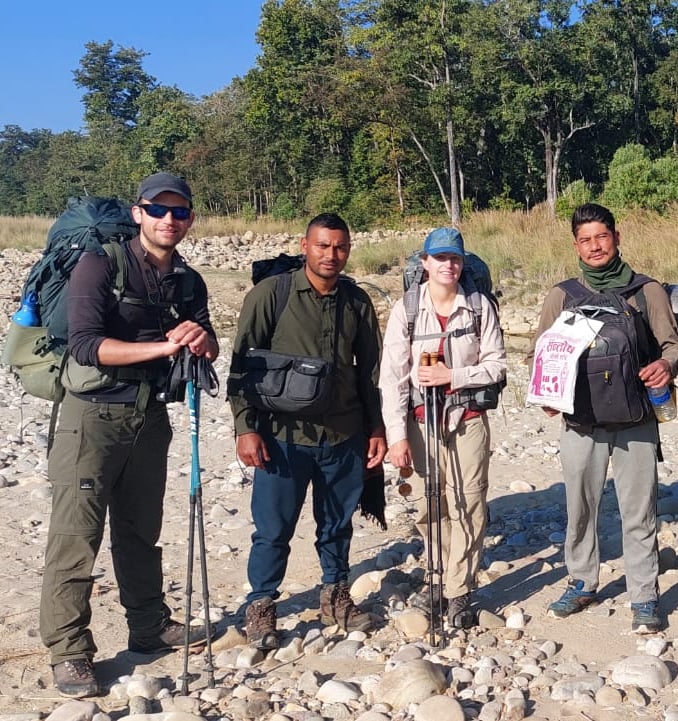In Your Suitcase
Recommended Packing List for Your Nepal Adventure
🧢 Clothing
Light cotton or linen outfits for the plains (Chitwan, Bardia, Lumbini)
Fleece or down jackets for the mountains and cool evenings
Windbreaker or raincoat (essential for monsoon or trekking)
Comfortable walking shoes and light sandals
Hat or cap and sunglasses
Respectful attire for temple visits (long pants, scarf)
🧴 Hygiene & Health
Minimalist toiletry kit
Biodegradable soap or wipes
Sunscreen and lip balm
Insect repellent
Small first-aid kit (plasters, disinfectant, paracetamol, anti-diarrhea medication)
Personal medications (with prescription)
📸 Equipment & Accessories
Daypack (20–30 L)
Water bottle or hydration bladder (preferably with filter)
Headlamp with spare batteries
Multi-tool knife (in checked luggage only)
Camera and/or binoculars for wildlife observation
Notebook and pen
📱 Documents & Essentials
Valid passport and copies
Visa (or printed e-visa)
Travel insurance
Cash in USD or EUR (easy to exchange)
International bank card
Local SIM card (Ncell or Nepal Telecom)
Power adapter (plugs type C, D, M – 220 V)
Tip: In the jungle, opt for neutral-colored clothing—greens, beiges, or browns—that blend with the surroundings and are less likely to disturb wildlife.


💡
Tips for Trekkers


Opt for a backpack rather than a hard suitcase.
It’s easier to carry, more adaptable to uneven paths, and far more practical for transport in rural or mountainous areas.
Think in layers — not in outfits.
Skip the bulky wardrobe and choose lightweight, breathable technical clothing that can be layered as temperatures change. Several thin, windproof layers will serve you much better than one heavy jacket or fleece.
Keep your backpack light: aim for 10–12 kg max for a 10-day trek.
Once you go beyond 15 kg, every meter of elevation gain feels harder, especially under the sun or on steep trails.
Golden rule: ultra-light and quick-drying textiles only.
Choosing compact, fast-drying clothing will make washing, drying, and carrying your gear far easier — and your trek far more enjoyable.
During your trek, you’ll stay in simple mountain lodges, known as tea houses, or in tents, depending on the itinerary.
There’s no need to pack heavy sleeping gear, as blankets or basic bedding are provided on-site.
In the more remote regions, expect very simple comfort, but always a genuine welcome and heartfelt hospitality from local families.
👉 Travel tip: Bringing a light sleeping bag liner can add an extra layer of comfort and hygiene, especially in high-altitude tea houses where nights can be chilly.
To pack specifically for a trek (in addition to your standard suitcase contents):
A towel – lightweight and quick-drying for convenience on the trail.
A way to purify water – such as pumps or purification tablets.
Proper hiking boots – sturdy and broken in before your departure.
Walking shoes – comfortable shoes for easier sections or evenings.
A notebook and pencil – to record your journey, jot down memories, or note your photos.
A sleeping bag liner (optional)
Traveling in Nepal means journeying from lush tropical jungles to soaring Himalayan passes in just a few days. With the right gear, you can fully enjoy this adventure without limits or discomfort. Pack light, breathe deeply, and set off with a free spirit to discover the authentic heart of Nepal.
ADVENTURE SAFARI & TREK
Experience Nepal’s hidden gems: from majestic landscapes to living traditions.
